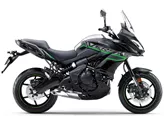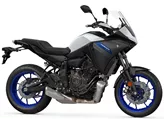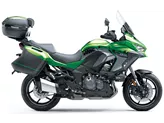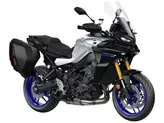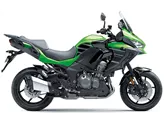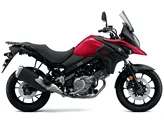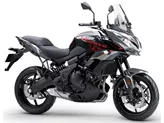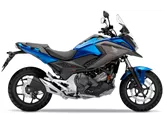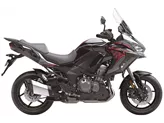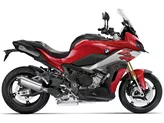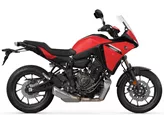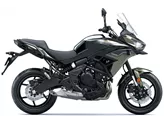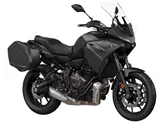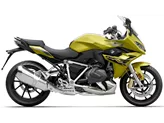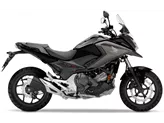Kawasaki Versys 650 2016 vs. Kawasaki Versys 1000 SE 2019

Kawasaki Versys 650 2016

Kawasaki Versys 1000 SE 2019
Overview - Kawasaki Versys 650 2016 vs Kawasaki Versys 1000 SE 2019
The Kawasaki Versys 650 2016 and the Kawasaki Versys 1000 SE 2019 are both enduro motorcycles with similar engine types, but they have several differences in terms of specifications and features.
In terms of engine power, the Versys 650 2016 has a power output of 69 HP, while the Versys 1000 SE 2019 boasts a more powerful engine with 120 HP. The Versys 650 2016 also has a torque of 64 Nm, while the Versys 1000 SE 2019 has a torque of 102 Nm. This means that the Versys 1000 SE 2019 has a significantly higher power and torque output, making it more suitable for riders who desire a more powerful and responsive motorcycle.
The Versys 650 2016 has a steel frame, while the Versys 1000 SE 2019 has an aluminum frame. This difference in frame material may result in variations in weight and handling characteristics. The Versys 650 2016 has a kerb weight of 216 kg, while the Versys 1000 SE 2019 is slightly heavier at 250 kg. This weight difference may affect the maneuverability and agility of the motorcycles.

Kawasaki Versys 650 2016
Both motorcycles feature upside-down telescopic forks in the front suspension, providing stability and control. However, the Versys 1000 SE 2019 offers more adjustments in the front and rear suspension, including compression, preload, and rebound adjustments. This allows riders to fine-tune the suspension to their preferences and riding conditions, enhancing the overall riding experience.
In terms of braking, both motorcycles have double disk brakes in the front. This ensures reliable and efficient braking performance. The dimensions of the front and rear tires are also similar, with a 17-inch diameter for both motorcycles. However, the Versys 1000 SE 2019 has a wider rear tire with a width of 180 mm, compared to the 160 mm width of the Versys 650 2016. This wider tire may provide better traction and stability during cornering.
Both motorcycles have a fuel tank capacity of 21 liters, allowing for longer rides without frequent refueling. The seat height is also the same for both models at 840 mm, providing a comfortable riding position for most riders.

Kawasaki Versys 1000 SE 2019
In terms of strengths, the Versys 650 2016 offers adjustable brake and clutch levers, a wide range of use, a sporty look, and a generous fuel tank capacity. On the other hand, the Versys 1000 SE 2019 boasts a great Ride-By-Wire system, a comprehensive electronics package, including electronic suspension, and a very comfortable seating position with top wind protection.
However, both motorcycles also have their weaknesses. The Versys 650 2016 has narrow handlebars, which may affect maneuverability, and it can feel somewhat sluggish in bends. Additionally, the high seat height may be a disadvantage for shorter riders. The Versys 1000 SE 2019, on the other hand, has a high price tag due to its advanced technology and the windshield may not be optimally adjustable for all riders.
In conclusion, the Kawasaki Versys 650 2016 and the Kawasaki Versys 1000 SE 2019 are both capable enduro motorcycles, but they cater to different rider preferences and needs. The Versys 650 2016 is a more budget-friendly option with a sporty look and adjustable levers, while the Versys 1000 SE 2019 offers a more powerful engine, advanced electronics, and a comfortable riding position. Ultimately, the choice between the two models depends on the rider's priorities and budget.
Technical Specifications Kawasaki Versys 650 2016 compared to Kawasaki Versys 1000 SE 2019
Pros and Cons in comparison
Pros and Cons in comparison
Kawasaki Versys 650 2016

When it was first introduced, the Versys 650 was a refreshing, modern concept that combined lots of fun with a lively in-line two-cylinder engine, high everyday utility and a wide range of uses. In the meantime, it has a few years under its belt and, after the visual update, which is very successful, it also deserves a technical overhaul. While the tank should not shrink, a lower seat height would be desirable.
Kawasaki Versys 1000 SE 2019

Kawa's solution, conceived in the adventure sector, is an uncompromising all-purpose weapon in the sport-touring sector. The machine's greatest strength: maximum comfort paired with state-of-the-art technology and the right amount of sportiness. The Ride-By-Wire in combination with the KECS and the electronic equipment ensure super responsiveness with maximum touring capability at the same time. The finely adjustable throttle, the smooth clutch and the electronic chassis ensure an almost majestic glide on the road. At the same time, the great seating position with the matching, if not the most beautiful, windshield ensures top aerodynamics - bravo!
Price Comparison Avarage Market Price Kawasaki Versys 650 vs Kawasaki Versys 1000 SE
There are a few key differences between a Kawasaki Versys 650 2016 and a Kawasaki Versys 1000 SE 2019. In terms of price, the actual average price of a Kawasaki Versys 1000 SE 2019 is about 98% higher. There are the same number of bikes of both models available on the 1000PS.de marketplace, specifically 10. It takes less time to sell a Kawasaki Versys 650 with 101 days compared to 107 days for a Kawasaki Versys 1000 SE. Since model year 2007 1000PS.de editors have written 39 reviews for the Kawasaki Versys 650 and 12 reviews for the Kawasaki Versys 1000 SE since model year 2019. The first review for the Kawasaki Versys 650 was published on 25/07/2006 and now has more than 3,900 views. This compares to more than 25,500 views for the first review on Kawasaki Versys 1000 SE published on 06/11/2018.






